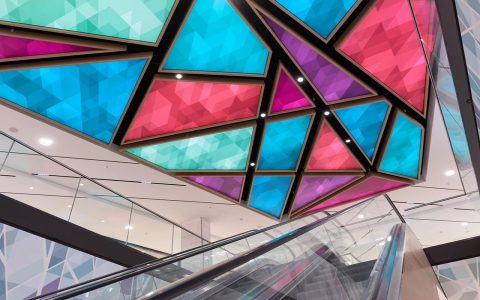Beck Hansen's album art is an integral component of his artistic output, consistently mirroring the eclectic and innovative nature of his music. Over decades, his album covers have showcased a wide array of visual styles, often involving collaborations with prominent contemporary artists and designers, and have themselves become iconic visual statements.
Key Characteristics of Beck's Album Art
- Visual Eclecticism: Just as his music blends genres, Beck's album art spans diverse aesthetics, from lo-fi collages and photography to sleek graphic design and abstract art.
- Conceptual Resonance: The artwork frequently provides a visual metaphor or extension of the album's thematic content and sonic explorations.
- Collaborative Spirit: Beck often partners with influential visual artists, photographers, and designers, ensuring a high level of artistic quality and originality for each release.
- Evolution of Style: The visual presentation of his albums has evolved alongside his musical shifts, reflecting different phases of his career and artistic focus.
- Interactive & Unconventional Formats: Some releases have experimented with packaging, such as customizable covers, pushing the boundaries of traditional album art.
A Visual Journey Through Notable Albums
- Mellow Gold (1994): Features a striking, somewhat crude sculpture created by Beck himself, photographed by Robert Fisher. The raw, DIY aesthetic perfectly matched the album's breakout hit "Loser" and its slacker-rock vibe.
- Odelay (1996): The iconic cover image is a photograph of a Komondor dog in mid-leap, taken by renowned animal photographer Joan Ludwig in 1977. The unexpected, dynamic image became instantly recognizable. Design by Beck Hansen and Robert Fisher.
- Mutations (1998): Showcases surreal, intricate artwork by Tim Hawkinson, featuring a manipulated portrait of Beck. This reflected the album's more introspective and experimental folk-rock sound. Design by Beck Hansen and Robert Fisher.
- Midnite Vultures (1999): Embraced a flamboyant, glossy, and highly stylized aesthetic, with creative direction by Beck, photography by Autumn de Wilde, and design by Kevin Reagan & XYZ. This mirrored the album's funk and R&B parody.
- Sea Change (2002): The cover features digital artwork by Jeremy Blake, who created four different interchangeable covers for the initial release, alongside evocative photography by Autumn de Wilde. The mood is somber and reflective, aligning with the album's melancholic themes.
- Guero (2005): Features distinctive, folk-art-inspired illustrations by Canadian artist Marcel Dzama. The style complements the album's blend of Latin influences, hip-hop, and rock. Design by Beck Hansen and The XYZ.
- The Information (2006): Released with a blank graph paper cover and a sheet of stickers, allowing listeners to create their own custom album art. This interactive concept was conceived by Beck.
- Modern Guilt (2008): Presents a minimalist, graphic black-and-white design. The art direction and design by French graphic designer So Me (Bertrand Lagros de Langeron) captured the album's more concise and urgent rock sound.
- Morning Phase (2014): Visually a companion piece to Sea Change, featuring atmospheric photography by Autumn de Wilde and art direction by Beck Hansen and Samantha Owen, evoking expansive landscapes and a sense of dawn.
- Colors (2017): Employs vibrant, bold, and geometric artwork by British artist Jimmy Turrell, with art direction by Jonathan Zawada and Beck. This directly reflected the album's bright, upbeat pop sound.
- Hyperspace (2019): Features a retro-futuristic aesthetic with Japanese text elements. The creative direction was by Beck and Vira-Lata, with artwork contributions from artists including Misha Kahn and Alim Smith.
Beck's dedication to compelling visual presentation ensures that each album is not just an auditory experience, but a complete artistic package. His album art consistently avoids an identifiable signature style, instead opting for visuals that best serve the specific artistic vision of each project, contributing significantly to his enduring reputation as a multifaceted artist.





